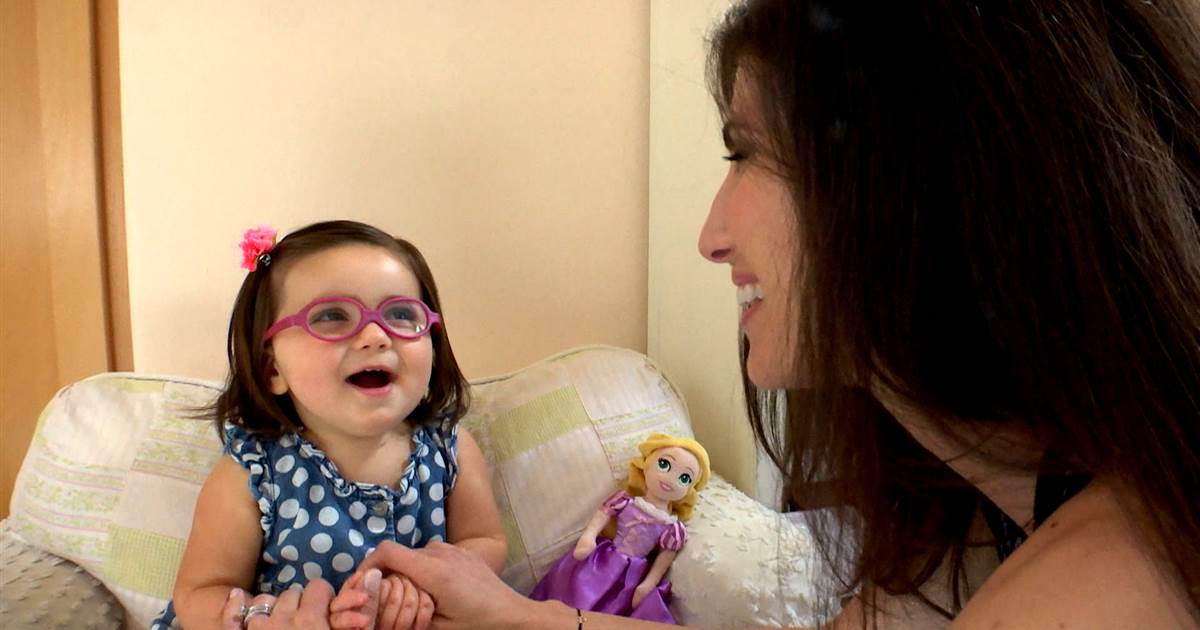10 Key Signs of Angelman Syndrome: What Families Need to Watch For
Every child's journey of development is unique, but for some, this path reveals distinctive milestones often accompanied by an unmistakably joyful and radiant spirit, even amidst significant challenges. This can be the first gentle sign of Angelman Syndrome, a rare genetic condition affecting an estimated one in every 15,000 individuals worldwide, across all races and genders. While it brings lifelong needs for continuous care, with initial symptoms like developmental delays and limited speech often appearing around six months of age, individuals with Angelman Syndrome frequently enchant those around them with ready smiles and infectious laughter. Understanding the specific early indicators—which can sometimes be misdiagnosed as autism or cerebral palsy—is crucial. Early recognition, confirmable through blood tests, unlocks access to vital support systems focused on enhancing communication, mobility, and overall quality of life. This guide is here to illuminate those key symptoms, empowering families with awareness and resources.
1. Ataxia

Ataxia refers to problems with walking, movement, and balance. Some patients with Angelman syndrome may not be able to walk at all, and others may have significant motor impairment. Patients who can walk may do so with their arms uplifted for better balance, and they might also flap their hands. A doctor can assess the degree of a patient's ataxia by performing a neurological exam and checking the patient's balance, gait, coordination, and reflexes. To help improve balance and motor skills, patients usually participate in intensive physical therapy. The physical therapist guides the child through exercises that strengthen muscle groups and teach movement patterns. Physical therapy can help Angelman syndrome patients with ataxia learn specific adaptations that could make walking and movement easier for them.
2. Developmental Delays

Developmental delays are often one of the first signs that appear in patients who are later diagnosed with Angelman syndrome. For example, parents may notice their child does not crawl or babble between six to twelve months old, the typical age range when these skills are acquired, and sitting might be difficult for some children. They may also have feeding difficulties and engage in repetitive behaviors. Patients may need help with using the toilet, dressing, and feeding. However, the degree of developmental impairment with Angelman syndrome varies widely. Some patients will be able to feed and dress themselves, and many are able to perform household chores and participate in recreational activities. Patients with Angelman syndrome enjoy listening to music and watching television, and they form close bonds with friends and family. They can be especially responsive to nonverbal communication. Therapists can teach patients who are nonverbal on how to communicate with others using sign language and pictures.
3. Jerky Or Stiff Movement

Many patients with Angelman syndrome exhibit jerky or stiff movement. They may also have low muscle tone (hypotonia), and numerous patients develop seizures that begin between the ages of two and three. Doctors can assess the patient's muscle tone and evaluate their movements with certain positioning tests. Physical therapy may help in teaching patients how to move more smoothly, and anti-seizure medications are often recommended to reduce the number of seizures the child has. Jerky or stiff movement may make it hard for patients to hold utensils or pencils; these skills can be improved with professional therapy and practice at home. Adaptive devices, including support bars and aids for grasping objects, can make it easier for Angelman syndrome patients with jerky movements to perform daily tasks and may increase their independence. Individuals with Angelman syndrome typically enjoy the water and water-based activities. Hydrotherapy and other water-based exercise programs may be useful in helping these patients move with less stiffness.
4. Intellectual Disability

The severity of intellectual disability associated with Angelman syndrome varies significantly. While conversational speech does not tend to develop in even the highest-functioning patients, individuals with this syndrome are able to understand speech. Studies have shown patients may be able to speak up to sixty words, and some will be able to communicate using simple sentences. Individuals with Angelman syndrome normally prefer to communicate with gestures, and the use of a system known as enhanced natural gestures could help them communicate more effectively. Angelman syndrome typically causes hyperactivity, and this may magnify any intellectual disability a patient has. As a result of the hyperactivity, patients may be unable to sustain eye contact or attention long enough to learn words. Behavioral therapy might be recommended to improve attention levels, and some doctors may suggest the use of medications designed for attention deficit disorder.
5. Microbrachycephaly

Microbrachycephaly refers to a combination of a small head size with flatness at the back of the head. It is one of the classic features of Angelman syndrome and may be one of the first parents and pediatricians notice. Head size may be measured at some routine appointments for infants, and doctors will also examine the child's head shape to see if it is flatter than expected. Individuals with this syndrome tend to have a head size that is smaller than their peers, and this remains the case throughout their lives. For patients with Angelman syndrome, microbrachycephaly usually occurs in combination with hypopigmentation. This symptom causes the patient to have light-colored hair, eyebrows, and eyes. While there are no treatments for microbrachycephaly and hypopigmentation, these symptoms may be the first clues that point to Angelman syndrome, potentially enabling patients to be diagnosed at an earlier stage and begin beneficial therapies sooner.
6. Profoundly Joyful Disposition & Frequent Laughter: The "Angel" Aspect

A hallmark that often endears individuals with Angelman Syndrome to everyone they meet is their unmistakably joyful, excitable, and affectionate demeanor. They frequently smile, laugh heartily (often at unexpected times), and exhibit an enthusiastic, happy nature. This inherent cheerfulness, often present even amidst significant developmental challenges, contributes profoundly to their unique personalities. While this effervescence is a beloved trait, the associated hyperactivity and short attention span can also require understanding and specific behavioral strategies to help channel their boundless energy positively in learning and daily activities, celebrating their radiant spirit.
7. Sleep Cycle Disturbances: The Wide-Awake Nights Challenge

Many families navigating Angelman Syndrome face significant sleep-related challenges that can impact the entire household. Individuals often experience markedly disrupted sleep-wake cycles, characterized by reduced total sleep time, frequent and prolonged night wakings, difficulty settling at bedtime, and sometimes early morning rising. These disturbances aren't just a fleeting phase; they can persist throughout life. Understanding these patterns is crucial, prompting discussions with specialists about behavioral interventions, optimizing sleep environments, exploring melatonin supplementation under guidance, or other therapies to improve rest for both the individual and their caregivers.
8. Unique Communication Profile: Understanding Beyond Spoken Words

While expressive verbal language is typically severely limited in Angelman Syndrome, with many individuals speaking fewer than 5-10 words, their receptive language skills (the ability to understand) are often significantly stronger. They frequently excel at non-verbal communication, utilizing gestures, pointing, eye contact, vocalizations, and sometimes formal systems like sign language or picture exchange communication systems (PECS) with remarkable effect. Recognizing and actively fostering these non-verbal strengths is paramount. Therapeutic interventions focus heavily on augmentative and alternative communication (AAC) to help them express their needs, wants, choices, and vibrant inner worlds.
9. Specific Sensory Interests: A Fascination with Water & Crinkly Textures

Beyond the core developmental characteristics, many individuals with Angelman Syndrome exhibit distinct and often intense sensory preferences, most notably a strong fascination with water and objects that make crinkling sounds (like plastic or Mylar). They might delight in water play, splashing, or watching reflections on water, finding it calming or highly engaging. Similarly, the sound and tactile sensation of crinkly materials can captivate their attention and bring joy. Understanding these sensory interests is invaluable for caregivers, as these preferences can be positively incorporated into therapeutic activities, play routines, and sensory diets, providing comfort and opportunities for learning.
10. Early Feeding Difficulties: Navigating Nutrition in Infancy & Toddlerhood

Among the very early potential indicators, feeding difficulties in infancy and toddlerhood are common for babies who are later diagnosed with Angelman Syndrome. These challenges can manifest as a weak suck, poor coordination of sucking and swallowing, significant gastroesophageal reflux (GERD) which can cause discomfort and vomiting, and a tongue thrust that pushes food out. These issues can sometimes lead to slow weight gain and make mealtimes particularly stressful for families. Early intervention with feeding specialists, occupational therapists, and sometimes adjustments to food consistency or specialized feeding techniques are crucial to support healthy growth and development.
Illuminating Angelman Syndrome: Fostering Potential, Embracing Joy

Understanding the distinctive constellation of signs associated with Angelman Syndrome—from developmental delays and unique movement patterns to their often profoundly joyful disposition and specific communication styles—is the first crucial step for families embarking on this unique journey. These 10 key indicators serve as a guide, empowering parents and caregivers to seek timely diagnosis and unlock a world of tailored support, therapies, and vital community connections. While Angelman Syndrome presents lifelong challenges requiring continuous care and adaptation, it does not diminish the immense potential for a life filled with love, laughter, learning, and meaningful interactions. Early and ongoing intervention through dedicated educational approaches and therapies can significantly enhance quality of life, helping each individual reach their fullest capabilities and allowing their truly radiant spirits to shine brightly. With awareness comes understanding, and with understanding comes the power to make a profound and positive difference.
